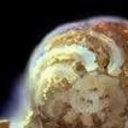Angiotensin-(1-7) attenuates atrial tachycardia-induced sympathetic nerve remodeling.
Märksõnad
Abstraktne
BACKGROUND
The effect of Angiotensin-(1-7) (Ang-(1-7)) on atrial autonomic remodeling is still unknown. We hypothesized that Ang-(1-7) could inhibit sympathetic nerve remodeling in a canine model of chronic atrial tachycardia.
METHODS
Eighteen dogs were randomly assigned to sham group, pacing group and Ang-(1-7) group. Rapid atrial pacing was maintained for 14 days in the pacing and Ang-(1-7) groups. Ang-(1-7) was administered intravenously in the Ang-(1-7) group. The atrial effective refractory period and atrial fibrillation inducibility level were measured at baseline and under sympathetic nerve stimulation after 14 days of measurement. The atrial sympathetic nerves labeled with tyrosine hydroxylase were detected using immunohistochemistry and Western blotting, and tyrosine hydroxylase and nerve growth factor mRNA levels were measured by reverse transcription polymerase chain reaction.
RESULTS
Pacing shortened the atrial effective refractory period and increased the atrial fibrillation inducibility level at baseline and under sympathetic nerve stimulation. Ang-(1-7) treatment attenuated the shortening of the atrial effective refractory period and the increase in the atrial fibrillation inducibility level. Immunohistochemistry and Western blotting showed sympathetic nerve hyperinnervation in the pacing group, while Ang-(1-7) attenuated sympathetic nerve proliferation. Ang-(1-7) alleviated the pacing-induced increases in tyrosine hydroxylase and nerve growth factor mRNA expression levels.
CONCLUSIONS
Ang-(1-7) can attenuate pacing-induced atrial sympathetic hyperinnervation.




